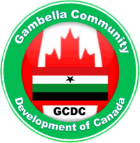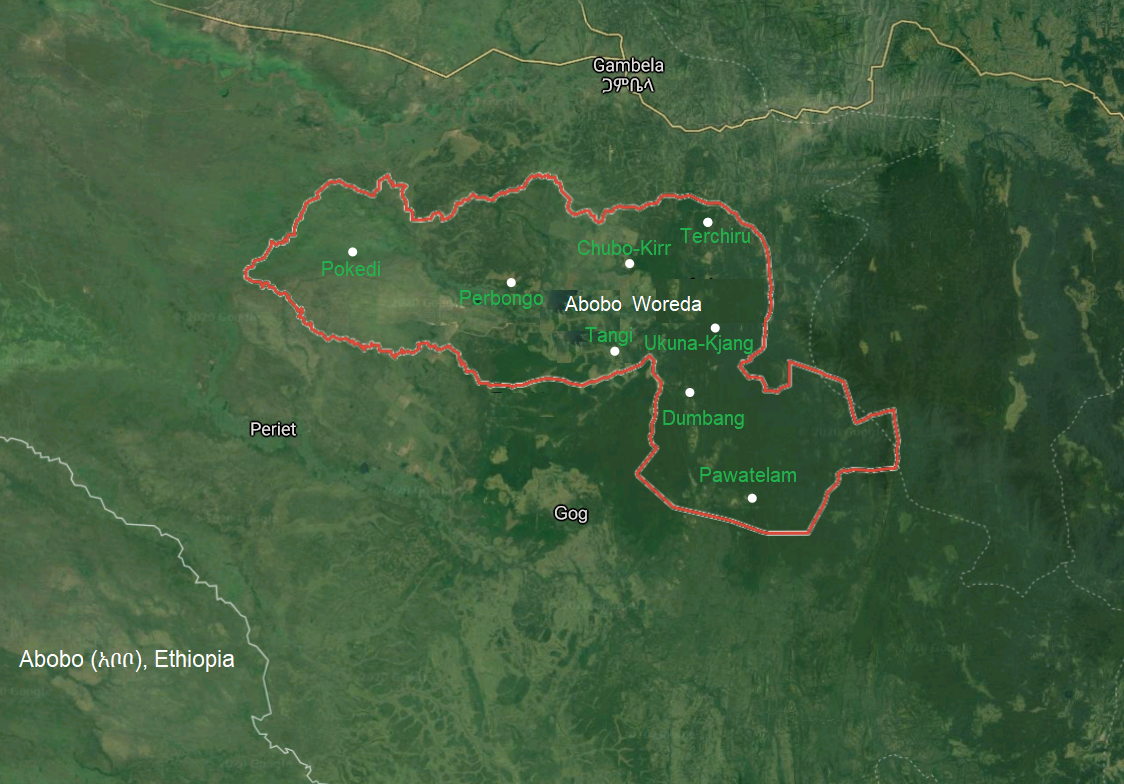Abobo (አቦቦ) is one of the districts (woredas) in the Gambella Region of Ethiopia.
Part of the Anywaa Zone, Abobo is bordered on the Southeast by the Majang Zone, on the South by Gog, on the Southwest by Jor, on the Northwest by Itang special woreda, on the North by Gambella Zuria, and on the Northeast by the Oromia Region; part of its northern boundary is defined by the Alwero River. The major town in Abobo is Abobo, the capital of Anywaa Zone, Gambella, Ethiopia.
Quick Facts
Abobo (አቦቦ) is the home of late King Gilo Odiel (Gilo-Waralaw) and his son prince Ojwanga Gilo, a Korean War veteran. It is the heartland of Anywaa Zone farmland and Anywaa kingdom. The terrain of Abobo is dominated by comparatively high ground extending on a Southeast-Northwest axis; the elevations range 400 – 600 meters above sea level. Major bodies of water in this woreda include Lake Alwero. Around 20% of the woreda is forest. A notable landmark is the Gambella National Park, which occupies the land west of the Pinyudo - Gambella road.
Economy
The economy of Abobo is predominantly agricultural. Estimated road density is reported to be between 5.1 and 10 kilometers per 1000 square kilometers.
Abobo is believed to have major gold resources. The Water and Mines Resources Development Bureau of Gambella was initiating a program that would drill newer manually operated wells, newer deep-water wells, and develop more springs. This would provide access to drinking water for 10,000 inhabitants, increasing coverage for the district (woreda) and Kebeles.
Administrative Kebeles
Abobo has about 19 Kebeles, 6 of them are the homes of resettles. The following is the list of the Kebeles in Abobo Woreda.
1.Tagni Kebele
2. Pokedi Kebele
3. Dumbang Kebele
4. Perbongo Kebele
5. Chubo Mender 8/9 Kebele
6. Chubo Mender 13 (Abowd) Kebele
7. Chubo Mender 11/12 Kebele
8. Chubo Mender 14 Kebele
9. Chubo-Kirr (Donyingree) Kebele
10. Chubo Kebele
11. Abaaru Kebele
12. Okuna- Piinø Kebele
13. Okuna-Kijang Kebele
14. Okuna-Kidöyï Kebele
15. Guracay (Guura caaï) Kebele
16. Tierkudhi Kebele (Gothok Village)
17. Tier Chiru Kebele
18. Lungnga Kebele
19. Iidhuoremo (Iidhu rïïmö) Kebele
20. Tierdanga Kebele
21. Ochokchala Kebele
Demographics
Based on the 2007 Census conducted by the CSA, this woreda has a total population of 15,741, an increase of 12.65% over the 1994 census, of whom 8,184 are men and 7,557 women; with an area of 3,116.17 square kilometers, Abobo has a population density of 5.05, which is greater than the Zone average of 4.83 persons per square kilometer. The census reported 4,090 or 25.98% are urban inhabitants. A total of 3,867 households were counted in this woreda, which results in an average of 4.1 persons to a household, and 3,663 housing units. The majority of the inhabitants said they were Protestant, with 71.41% of the population reporting they observed this belief, while 10.77% were Catholic, 9.98% of the population practiced Ethiopian Orthodox Christianity, and 6.12% were Muslim.
According to the 1994 national census, the woreda's population was reported to be 13,973 in 3,597 households, of whom 7,223 were men and 6,750 women; 1,222 or 8.75% of the population were urban inhabitants. The five largest ethnic groups in Abobo were the Anywaa (44.05%), the Kambaata (20.1%), the Amhara (12.57%), the Oromo (6.31%), and the Majang (5.99%); all other ethnic groups made up 10.98% of the population. Dha-Anywaa is spoken as a first language by 44.08%, 20.45% speak Kambaata, 13.5% Amharic, 5.93% Majang, and 5.65% speak Oromiffa; the remaining 10.39% spoke all other primary languages reported. The largest group of the inhabitants said they were Protestant, with 32.2% of the population reporting they practiced that belief, while 29.66% professed Ethiopian Orthodox Christianity, 16.01% practiced traditional religions, 13.71% were Muslim, and 6.46% were Catholic.




